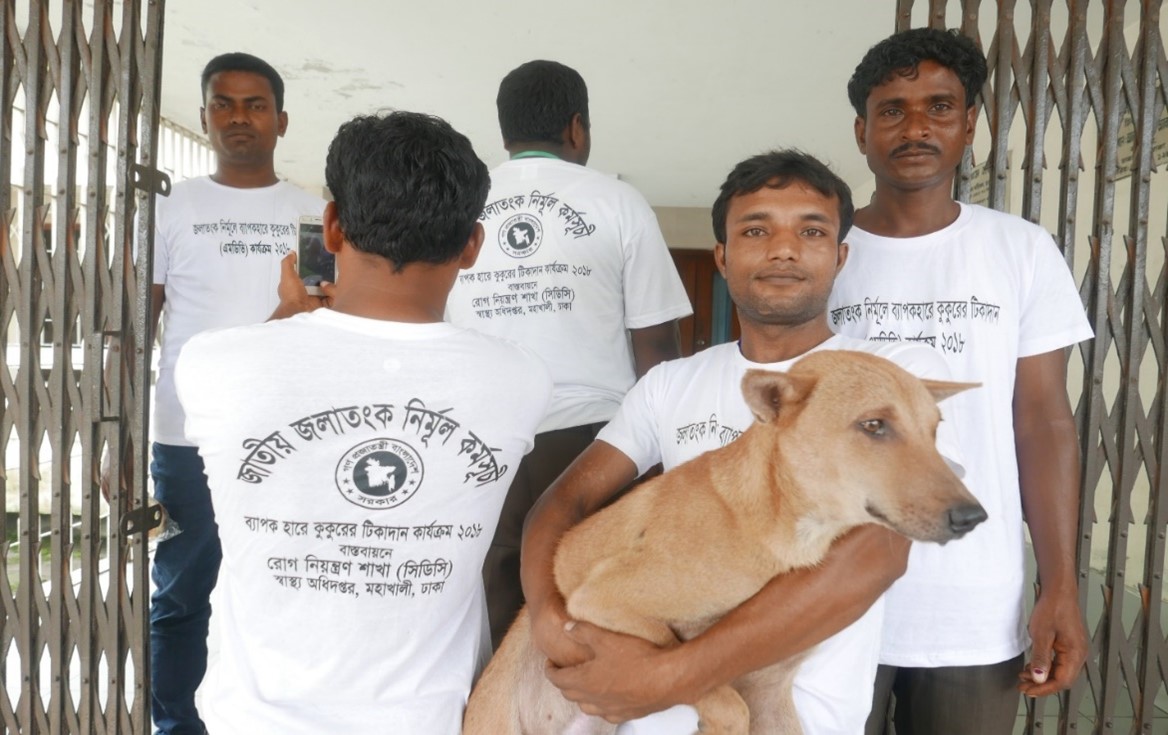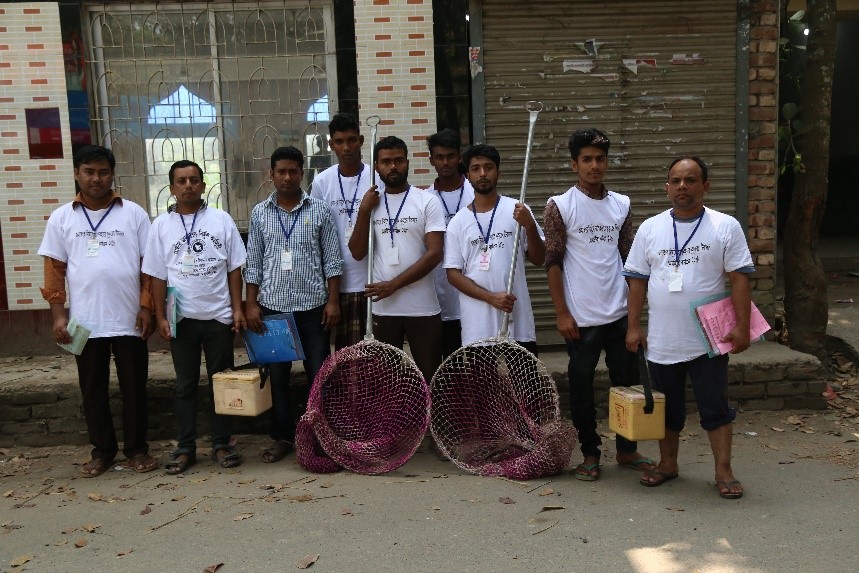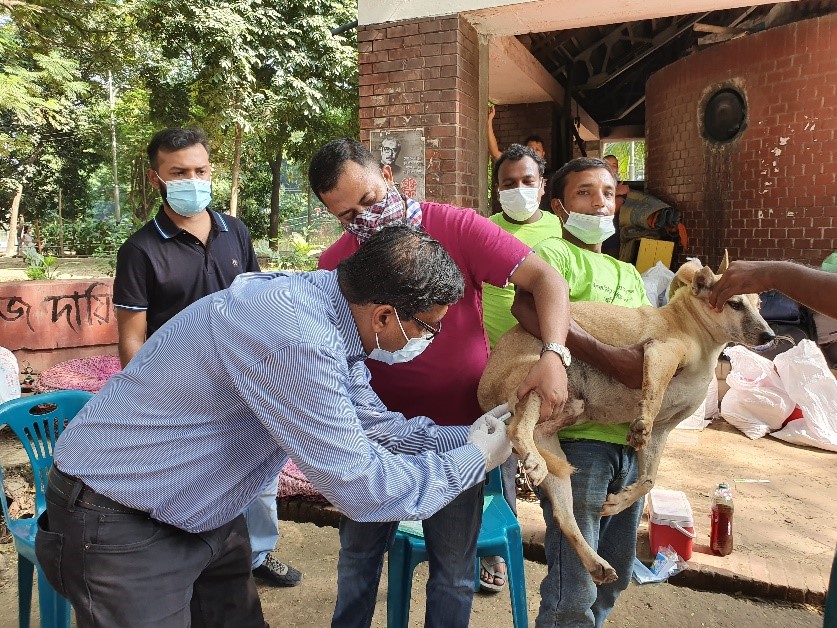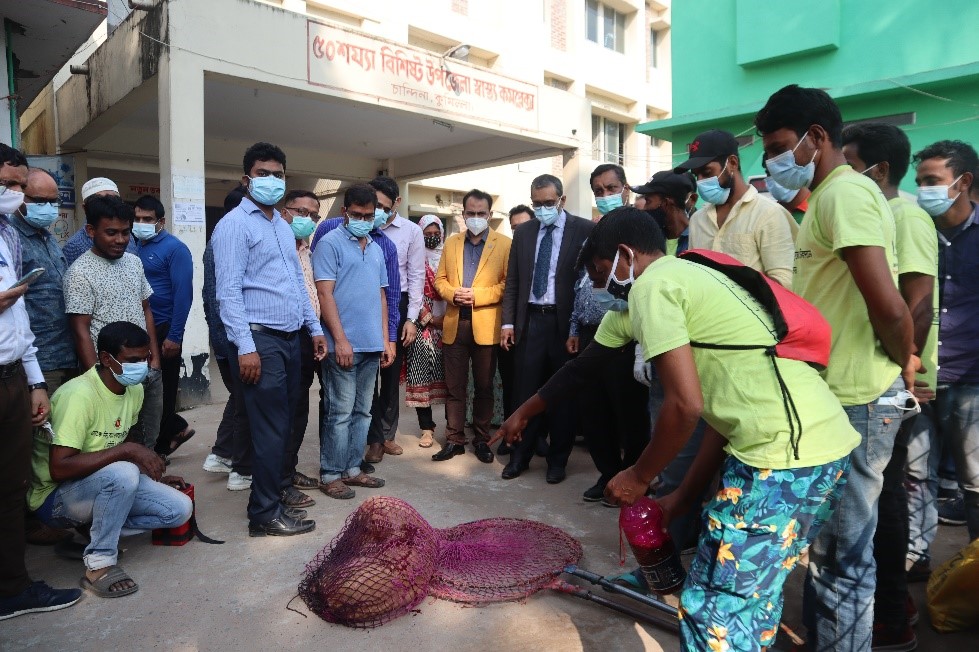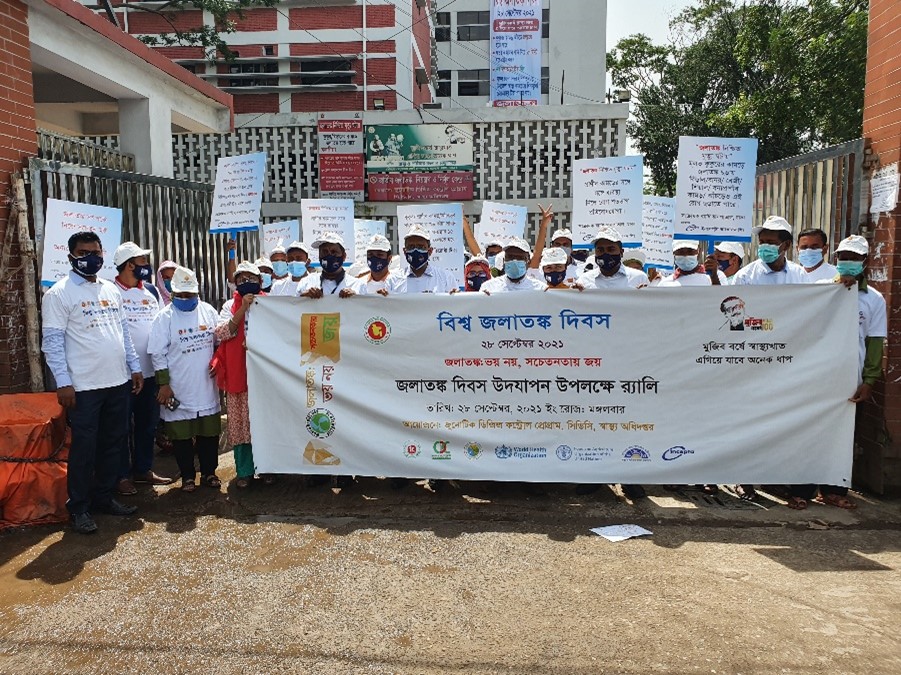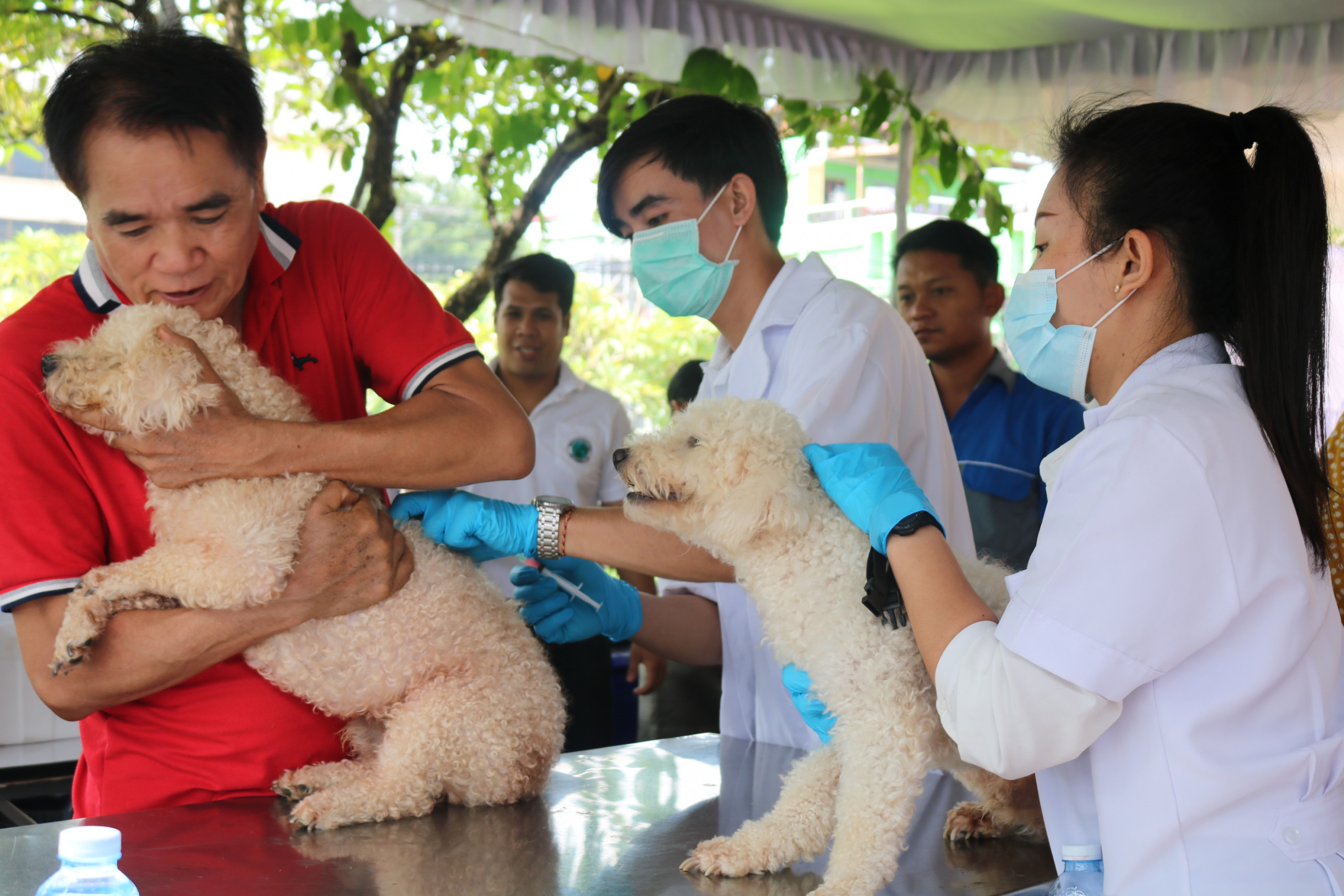
7 Oct 2022 (Bangladesh) – About 1.7 million dogs live in Bangladesh, most roaming freely in the streets. Unfortunately, they are also the main transmitter of rabies, a zoonotic disease that still is endemic in the country. Infections impose a heavy burden on the affected communities, despite being 100% preventable. Fortunately, in the last years, Bangladesh managed to reduce the number of rabies cases by more than 50%.
This success is due to collaborative interventions by the Ministry of Health & Family Welfare, Ministry of Fisheries & Livestock, Ministry of Local Government, Rural Development & Cooperative and the Ministry of Education. Jointly they implemented rigorous mass dog vaccination programmes, provided post-exposure prophylaxis for bite victims and raised awareness throughout the country. Collaboration between the different sectors is key to working towards the global goal of eliminating dog-mediated human rabies deaths by 2030 and a prime example of what a One Health approach can achieve.
A One Health mass dog vaccination team in Bangladesh. (© HSM TARIF, Narsingdi Sadar Upazila,Narsingdi, 2018)
Bangladesh’s mass dog vaccination campaign was piloted in 2011 in Cox’s Bazar municipality on the country’s southeast coast. From there, the campaign spread all over the country. Teamwork is essential when it comes to vaccinating free-roaming dogs. The One Health concept was put into practice by bringing together expertise from various sectors and levels. A typical mass dog vaccination team consist of six members from different sectors; two expert animal control officers, one surveyor from the health sector, one vaccinator from the Department of Livestock Services, one local animal control officer and one porter from the local government.
Mass dog vaccination animal control staff training. (© HSM TARIF, Ward number-15, Dhanmondi, DHAKA North City Corporation, 2020)
Until June 2022, the teams have used about 2.25 million rabies vaccine doses to vaccinate dogs in all 64 districts, covering 81.57%. However, as dog vaccination is not a one-time activity, booster vaccines must be administered yearly, with 17 districts already having completed their 2nd and six districts their 3rd round of vaccination.
In addition to preventing rabies at the source (the dogs), Bangladesh established more than 300 modern Animal Bite Management Centres at the national, district and sub-district (Upazilla) levels. It is crucial to ensure that remote communities have the opportunity to seek medical care. Travel time and available transportation options greatly influence the decision to visit one of the Centres for treatment of bites. They are now ensuring an uninterrupted human rabies vaccine and immunoglobulin supply to provide rabies post-exposure prophylaxis to more than 400,000 bite victims annually.
Demonstration of the mass dog vaccination programme to the community. (© Dr. MD. Kamrul Islam, Titas Upazila, Cumilla District, 2021)
Before 2010, rabies estimably caused more than 2000 human deaths in Bangladesh. However, implementing human and animal vaccination and educating communities about treatment options instead of relying on traditional medicines helped rigorously reduce the disease burden. As a result, in 2021, only 40 rabies cases were registered.
Despite difficulties and setbacks during the COVID-19 pandemic, Bangladesh continued their collaboration with different stakeholders using a One Health approach to get closer to eliminating all human rabies deaths.
rabies estimably caused more than 2000 human deaths in Bangladesh. However, implementing human and animal vaccination and educating communities about treatment options instead of relying on traditional medicines helped rigorously reduce the disease burden.
Raising awareness on World Rabies Day at the Infectious Disease Hospital, Mohakhali, Dhaka in 2021. (© Dr. MD. Kamrul Islam)
This article is part of a series published for activities for World Rabies Day 2022, to share challenges and successes in controlling the disease. With a fatality rate of almost 100% in humans and animals alike, rabies remains a global threat, killing approximately 59,000 people every year.
WOAH has long been committed to tackle the disease, supporting its Members in the path towards a rabies-free future. Dog-mediated rabies is set for elimination by 2030. With this goal in mind, WOAH strives to coordinate intersectoral action at a global level and to accompany countries in the development and implementation of their national rabies strategies.
Banner photo: Expert dog catchers during a mass dog vaccination evaluation programme with development partners. (© HSM TARIF, Narayanganj City Corporation, 2018)
